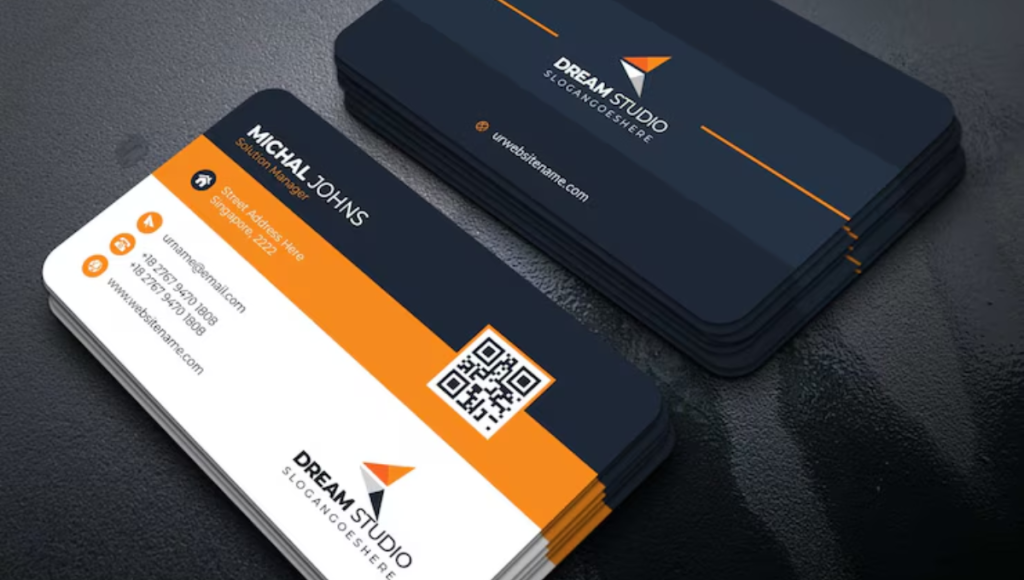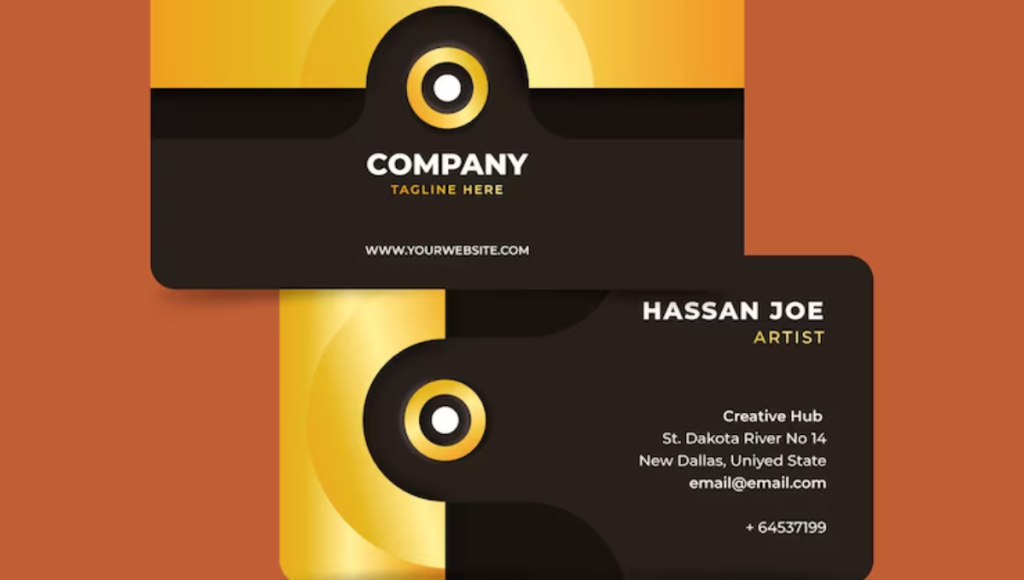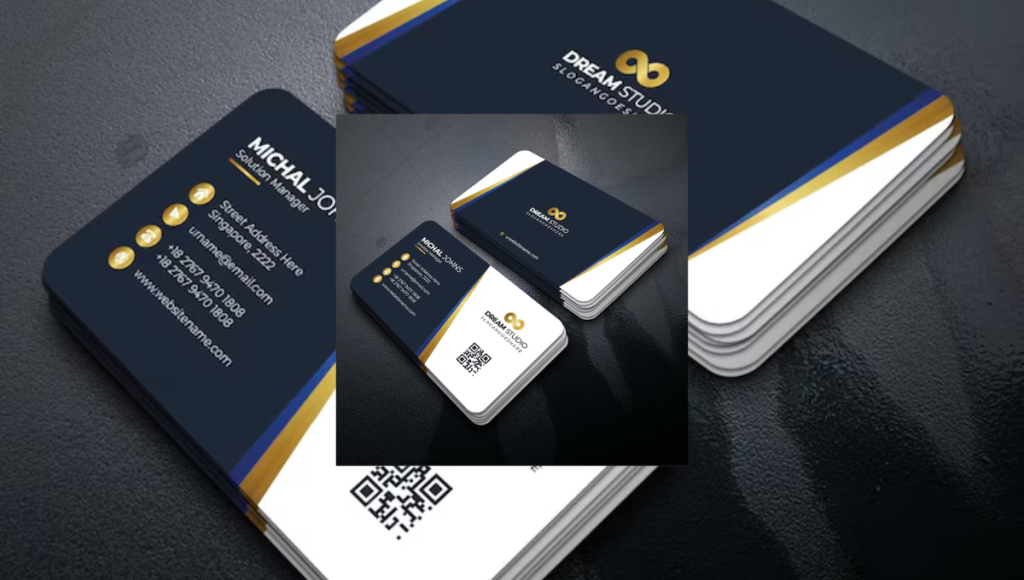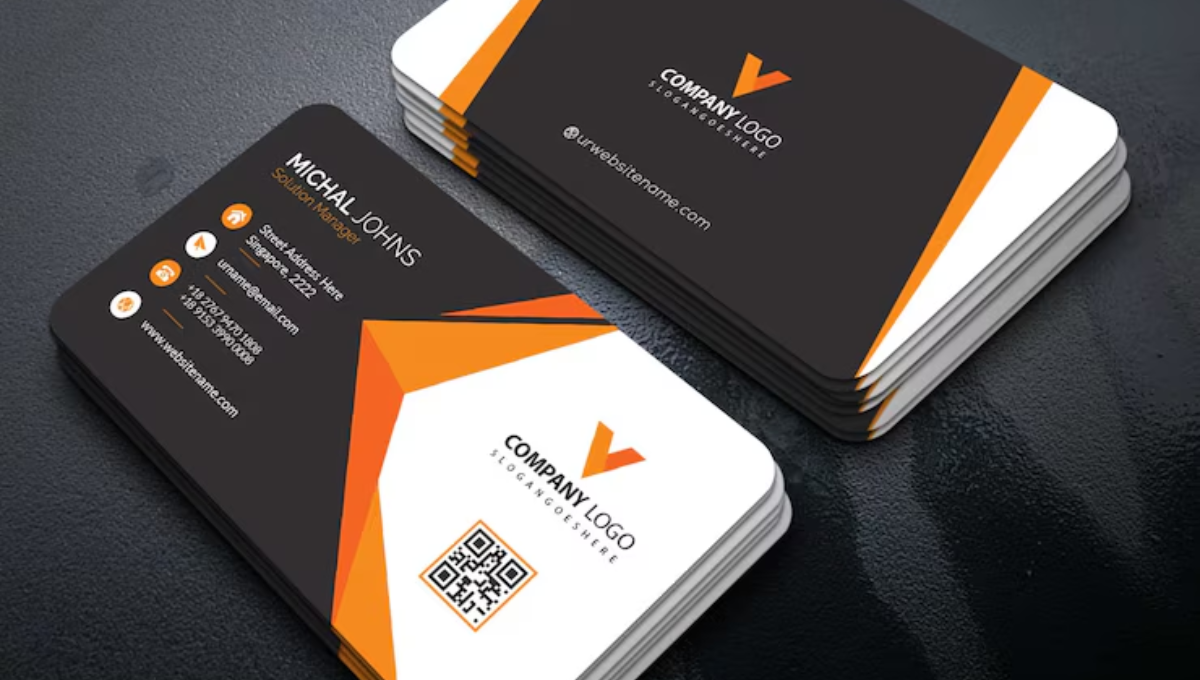In today’s competitive automotive industry, mechanic business cards serve as powerful marketing tools that can significantly impact your success. Whether you’re running an independent garage, mobile repair service, or specialty automotive shop, professional business cards help establish credibility and make lasting impressions on potential customers.
Must Read:Dump Truck Business Guide 2025: Start, Grow & Profit | Complete Startup Manual
Mechanic business cards do more than simply provide contact information – they represent your brand, showcase your professionalism, and often serve as the first tangible interaction customers have with your business. In an industry where trust and reliability are paramount, a well-designed business card can be the difference between gaining a loyal customer and losing them to a competitor.

Understanding the Importance of Professional Business Cards for Mechanics
The automotive repair industry relies heavily on word-of-mouth referrals and personal recommendations. When a satisfied customer hands your business card to a friend or family member, that small piece of cardstock becomes a powerful marketing ambassador. Studies show that business cards have a 27% higher response rate than direct mail advertising, making them one of the most cost-effective marketing tools available to automotive professionals.
For mechanics, business cards serve multiple purposes beyond basic contact sharing. They demonstrate attention to detail – a crucial quality in automotive repair work. A mechanic who takes pride in their business card presentation likely extends that same care to vehicle repairs. This psychological connection isn’t lost on potential customers who are entrusting their valuable vehicles to your expertise.
Essential Elements of Effective Mechanic Business Cards
Contact Information and Accessibility
Your mechanic business cards must include all essential contact information clearly and prominently. This includes your business name, your name and title, phone number, email address, and physical address if you have a fixed location. For mobile mechanics, consider adding your service area coverage. QR codes have become increasingly popular, allowing customers to quickly save your contact information or visit your website.
Professional Design Elements
The design of your business card should reflect the automotive industry while maintaining professionalism. Common design elements include automotive tools like wrenches, gears, or vehicle silhouettes. However, avoid cluttering the design with too many elements. Trends like minimalism, bold typography, and custom illustrations are all on the rise, making clean, focused designs more effective than busy, complicated layouts.
Color Psychology in Automotive Branding
Color choices significantly impact how customers perceive your automotive business. Traditional automotive colors include black, silver, red, and blue, each conveying different messages. Black suggests sophistication and premium service, while blue conveys trust and reliability. Red implies speed and performance, making it ideal for performance shops or racing specialists. Silver and metallic tones connect directly with automotive aesthetics.
Typography and Readability
Your business card text must be easily readable at a glance. Typography is taking a front-row seat in business card design for 2025. Oversized letterforms, experimental typefaces, and bold typographic compositions create a visual impact that’s impossible to ignore. However, prioritize clarity over creativity – customers need to quickly identify your services and contact information

2025 Design Trends for Mechanic Business Cards
Modern Minimalism
The automotive industry is embracing minimalist design approaches that emphasize clean lines and uncluttered layouts. This trend reflects the precision and attention to detail that customers expect from automotive professionals. Minimalist designs also reproduce better across different printing methods and materials.
Sustainable Materials
Environmental consciousness is increasingly important to consumers, and this extends to business card materials. Recycled papers, biodegradable plastics, and eco-friendly inks are becoming popular choices for automotive businesses looking to demonstrate environmental responsibility.
Interactive Elements
Modern technology has introduced interactive elements to traditional business cards. QR codes linking to service videos, augmented reality features showing before-and-after repair photos, or NFC chips that instantly share contact information are becoming more common in the automotive industry.
Bold Typography and Artistic Lettering
In 2025, lettering is getting its moment in the spotlight as one of the most prominent business card design trends. These business card designs aren’t just cool fonts; they’re designs where the text is the graphic. For mechanics, this trend can be particularly effective when incorporating automotive-themed typography that resembles tool markings or vehicle styling elements.
Choosing the Right Materials and Finishes
Paper Quality and Durability
Automotive work environments are often dirty and demanding, so your business cards need to withstand rough handling. Higher-quality cardstock (at least 14pt thickness) provides durability and conveys professionalism. Coated papers resist stains and moisture better than uncoated options.
Special Finishes and Effects
Premium finishes can help your mechanic business cards stand out from competitors. Options include:
- Matte lamination: Provides durability and a sophisticated feel
- Spot UV coating: Highlights specific design elements with glossy accents
- Embossing: Creates raised text or graphics for tactile appeal
- Foil stamping: Adds metallic accents that appeal to automotive aesthetics
- Die-cutting: Creates unique shapes that reflect automotive themes
Specialty Materials
Beyond traditional paper, consider alternative materials that align with automotive themes. Plastic cards resist oil and dirt better than paper, while metal cards make a premium impression suitable for high-end automotive services.

Content Strategy: What Information to Include
Core Business Information
Every mechanic business card must include fundamental business details. Your business name should be prominent, followed by your personal name and relevant certifications or specializations. Contact information should include multiple ways for customers to reach you – phone, email, and physical address for brick-and-mortar shops.
Services and Specializations
Limited space requires strategic selection of service information. Instead of listing every service, focus on your primary specializations or unique offerings. Terms like “ASE Certified,” “European Specialists,” or “24/7 Emergency Service” communicate value propositions effectively.
Trust-Building Elements
Include elements that build customer confidence, such as:
- Professional certifications and licenses
- Years of experience
- Warranty information
- Insurance coverage
- Awards or recognition
Call-to-Action Elements
Encourage specific actions with clear messaging. Examples include “Call for Free Estimates,” “Schedule Online,” or “Emergency Service Available.” These action-oriented phrases guide potential customers toward engagement.
Industry-Specific Design Considerations
Automotive Tool Imagery
Incorporating automotive tools and equipment into your design creates immediate industry recognition. Commonly used symbols include wrenches, gears, pistons, and vehicle silhouettes. However, ensure these elements enhance rather than overwhelm your design.
Vehicle-Specific Specializations
If you specialize in specific vehicle types or brands, reflect this in your design. Classic car specialists might use vintage automotive elements, while motorcycle mechanics could incorporate bike-specific imagery. Luxury vehicle specialists might employ more sophisticated design elements.
Service Environment Considerations
Your work environment should influence design choices. Mobile mechanics might emphasize portability and convenience in their designs, while high-end shop owners might focus on luxury and precision. Industrial fleet service providers could incorporate commercial vehicle elements.
Digital Integration and Modern Features
QR Code Implementation
QR codes provide seamless bridges between physical cards and digital presence. They can link to your website, online booking system, customer reviews, or service galleries. Position QR codes prominently but ensure they don’t dominate the design.
Social Media Integration
Include social media handles if they’re professionally maintained and relevant to your automotive business. Instagram works well for visual before-and-after content, while Facebook pages can showcase customer testimonials and community engagement.
Online Booking Systems
If you use online scheduling software, promote this convenience on your business cards. Text like “Book Online 24/7” or “Schedule at YourWebsite.com” appeals to customers who prefer digital interactions.
Cost-Effective Printing Solutions
Bulk Printing Benefits
Business cards become more cost-effective with larger quantities. Standard printing runs of 500-1000 cards provide better per-unit pricing while ensuring adequate supply for consistent marketing efforts.
Online Printing Services
Modern online printing services offer professional quality at competitive prices. Services like Vistaprint, Moo, and 48HourPrint provide templates specifically designed for automotive businesses, along with professional finishing options.
Local Printing Partnerships
Developing relationships with local print shops can provide advantages including faster turnaround times, personalized service, and the ability to review physical samples before committing to large orders.
Distribution Strategies for Maximum Impact
Networking Opportunities
Professional automotive associations, trade shows, and industry events provide excellent opportunities for business card distribution. These venues connect you with potential customers and industry partners who value professional presentation.
Customer Interaction Points
Train staff to present business cards during every customer interaction. This includes service completion, estimate delivery, and follow-up communications. Consistent distribution ensures every customer has your contact information readily available.
Strategic Partnerships
Develop relationships with complementary businesses like tire shops, parts stores, towing services, and car dealerships. Cross-referrals between automotive professionals can significantly expand your customer base.
Community Engagement
Participate in community events, car shows, and local business organizations. These venues provide opportunities to showcase your professionalism while building local brand recognition.
Measuring Mechanic Business Cards Effectiveness
Tracking Customer Acquisition
Implement systems to track how new customers discovered your business. Simple questions during initial consultations can reveal whether business cards contributed to customer acquisition. This data helps justify marketing investments and guide future strategies.
Conversion Rate Analysis
Monitor the percentage of business card recipients who become customers. Low conversion rates might indicate design problems, target audience misalignment, or distribution strategy issues that need addressing.
Return on Investment Calculation
Calculate business card ROI by comparing printing costs against revenue generated from card-sourced customers. This analysis helps determine optimal printing quantities and design investment levels.
Common Mistakes to Avoid
Information Overload
Cramming too much information onto business cards creates cluttered, hard-to-read designs. Prioritize essential information and use clean, organized layouts that guide the eye naturally through the content.
Poor Quality Materials
Cheap cardstock and poor printing quality reflect negatively on your business. Customers associate business card quality with service quality, making professional printing a worthwhile investment.
Outdated Contact Information
Regularly review and update business cards to ensure accuracy. Outdated phone numbers or addresses frustrate potential customers and create missed opportunities.
Generic Designs
Cookie-cutter templates that could apply to any business fail to differentiate your automotive services. Invest in designs that specifically reflect your mechanical expertise and unique value propositions.
Advanced Marketing Strategies Mechanic Business Cards
Seasonal Campaigns
Create seasonal business card variations that address specific automotive needs. Winter cards might emphasize battery service and winterization, while summer versions could highlight air conditioning repair and vacation preparation services.
Referral Programs
Design business cards that incorporate referral incentives. Cards with tear-off sections containing discount codes encourage word-of-mouth marketing while providing tracking mechanisms for referral programs.
Multi-Card Systems
Develop different business card versions for various purposes. Service cards for completed work, consultation cards for estimates, and premium cards for high-value customers allow targeted marketing approaches.
Future Trends and Innovations Mechanic Business Cards
Augmented Reality Integration
Emerging AR technology allows business cards to trigger digital content when viewed through smartphone cameras. Automotive businesses might use AR to show repair processes, customer testimonials, or facility tours.
Biodegradable Smart Cards
Environmental concerns are driving development of biodegradable cards with embedded technology. These innovations align with growing sustainability awareness while maintaining modern functionality.
Personalization Technology
Advanced printing technology enables cost-effective personalization of individual cards. Mechanics might customize cards for specific customers, including vehicle information or service history references.
Frequently Asked Questions
What information should I include on my mechanic business cards?
Essential information includes your business name, personal name and title, phone number, email address, and physical address (if applicable). Add specializations like “ASE Certified” or “European Specialist” to differentiate your services. Include a simple call-to-action like “Call for Free Estimates” and consider adding a QR code linking to your website or online booking system.
How much should I spend on business card design and printing?
Professional business card design typically costs $50-200, while printing ranges from $20-100 for 500-1000 cards depending on materials and finishes. This investment is minimal compared to potential revenue from customer acquisition. Higher quality materials and finishes may cost more initially but create better impressions and last longer in customers’ wallets.
What design elements work best for automotive business cards?
Effective automotive business cards incorporate professional color schemes (black, blue, silver, red), clean typography, and subtle automotive imagery like tools or vehicle silhouettes. Avoid cluttering designs with too many elements. Modern trends favor minimalist approaches with bold typography and strategic use of white space. Ensure all text is easily readable and contact information stands out prominently.
Should I include my services list on my business card?
Due to space limitations, focus on your primary specializations rather than comprehensive service lists. Use terms that communicate value and expertise, such as “Brake Specialists,” “Transmission Experts,” or “Import Vehicle Service.” If you offer unique services like mobile repair or 24/7 emergency service, highlight these differentiators prominently.
How can I make my mechanic business cards stand out from competitors?
Differentiate your cards through professional design, quality materials, and unique elements like QR codes linking to customer testimonials or service videos. Consider special finishes like spot UV coating on your logo or embossed text. Most importantly, ensure your cards reflect your specific automotive expertise and unique value propositions rather than using generic templates.



